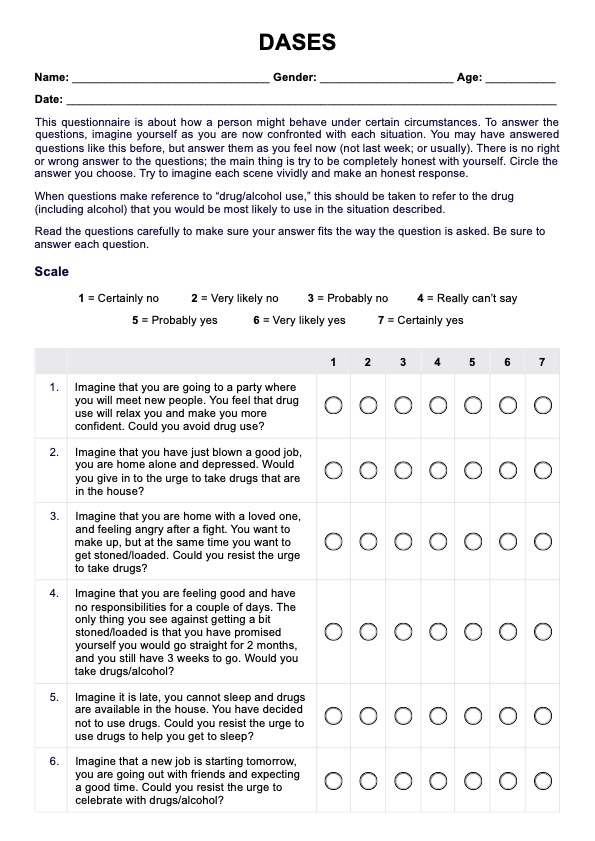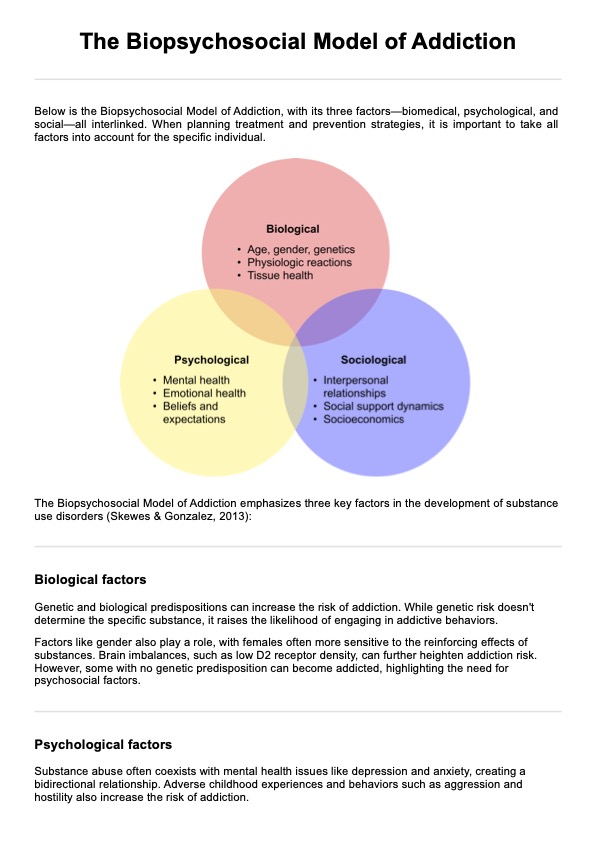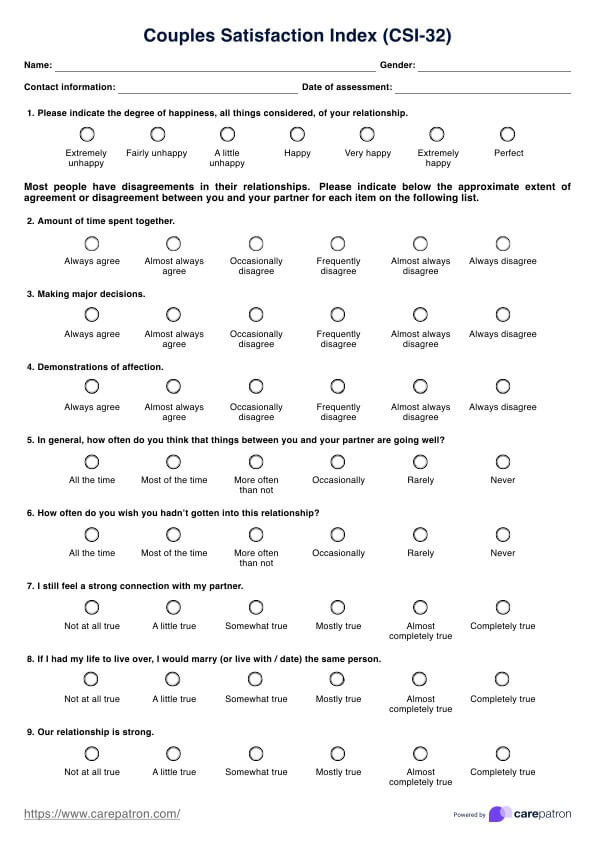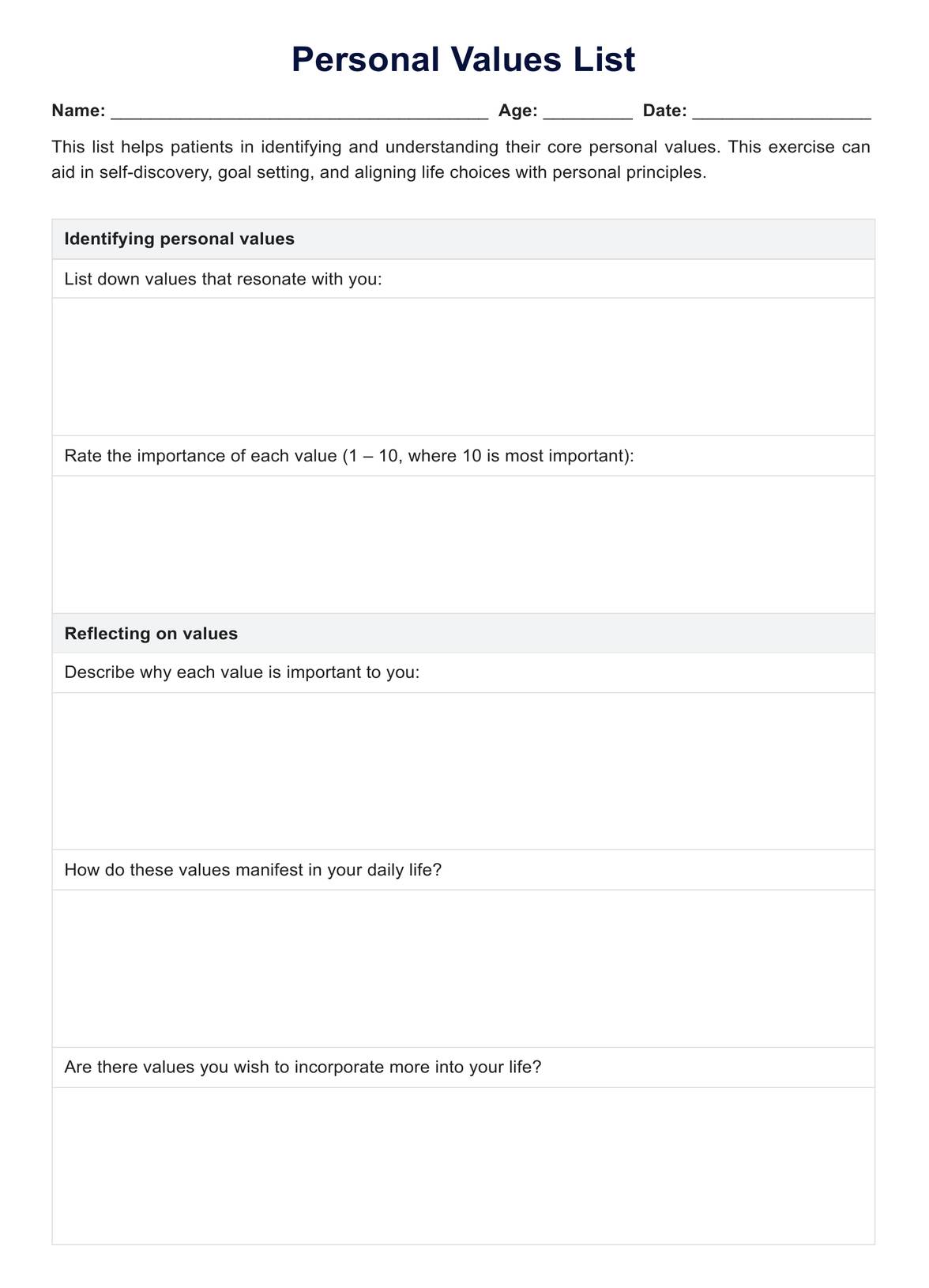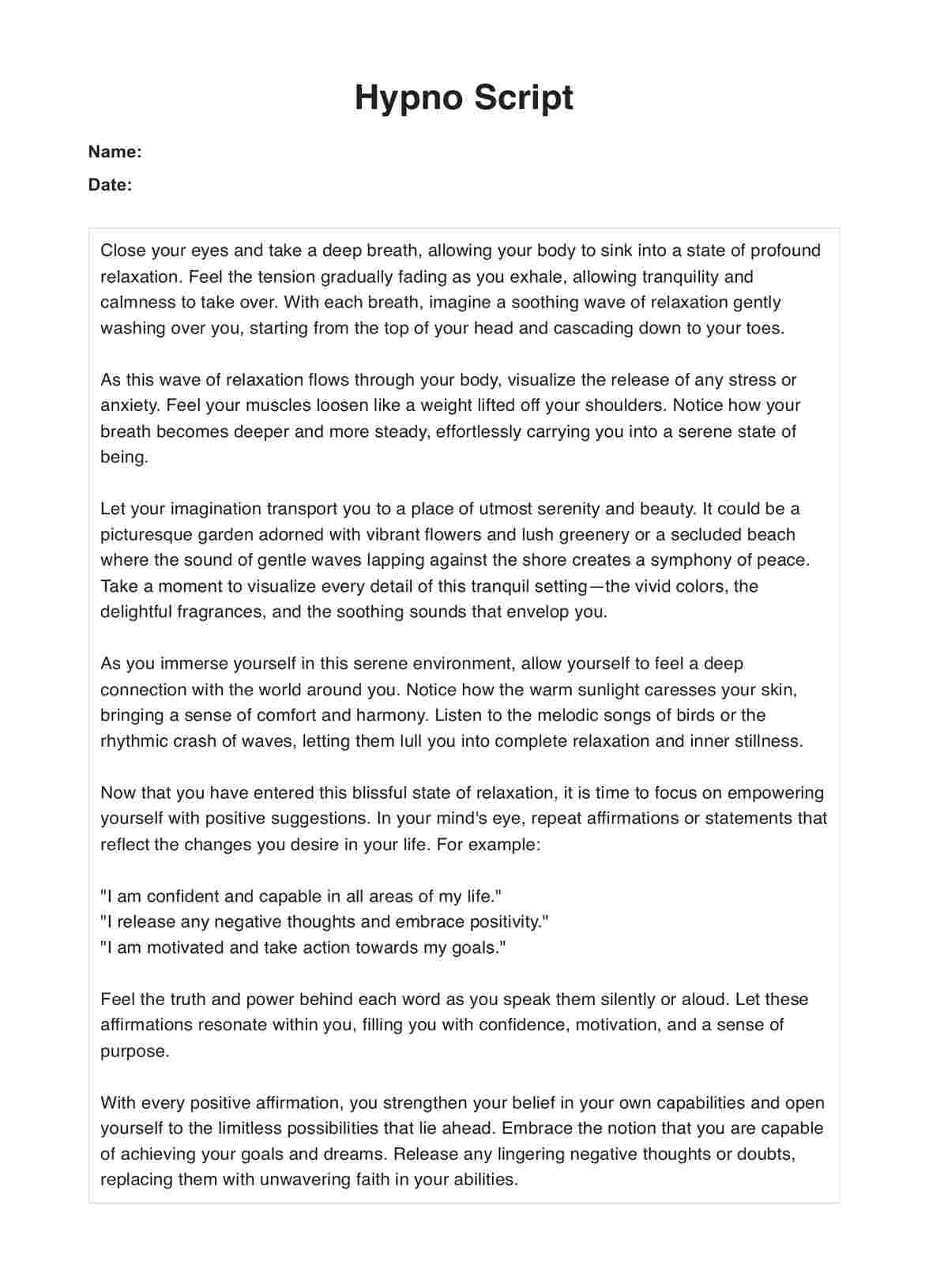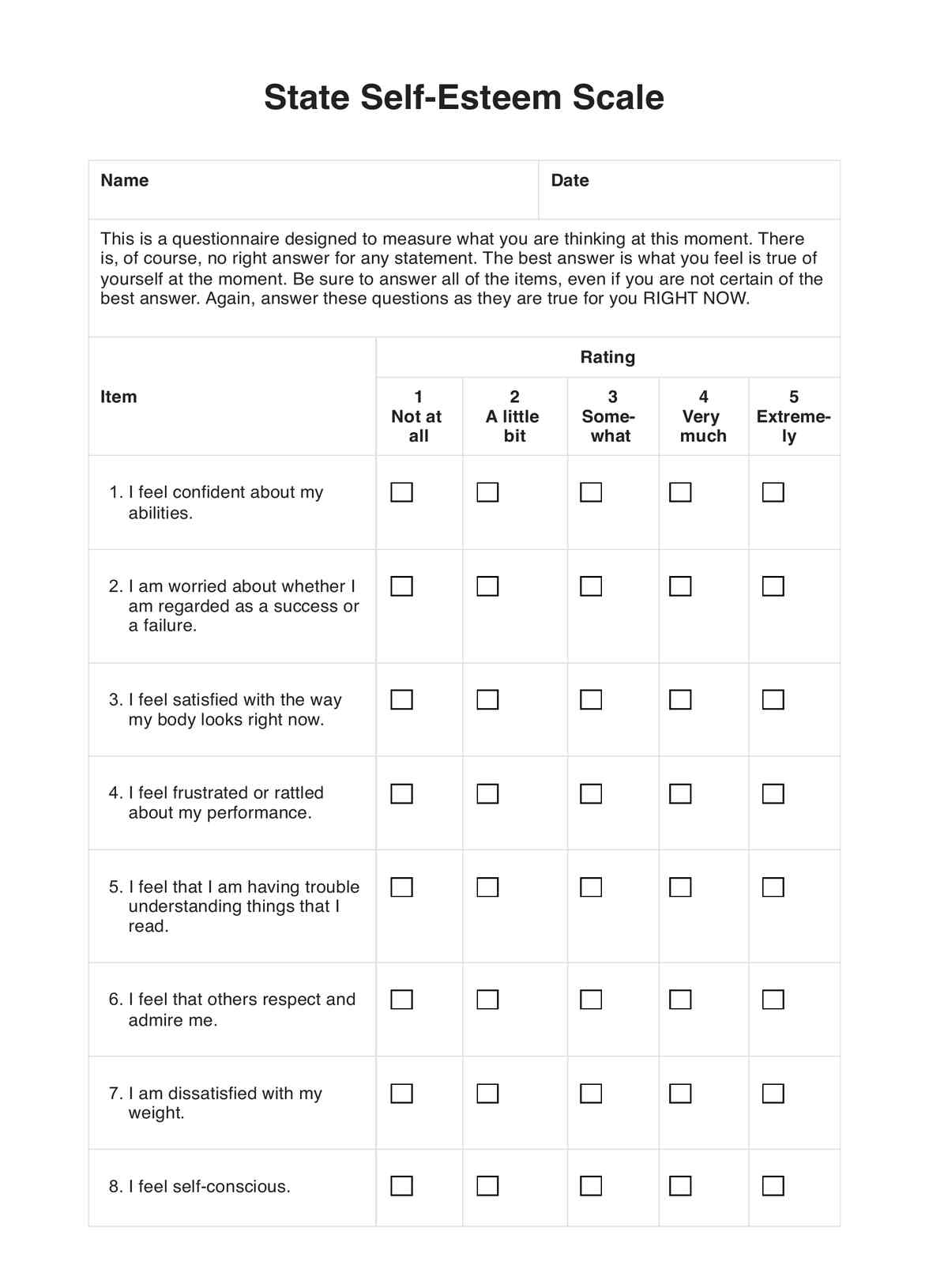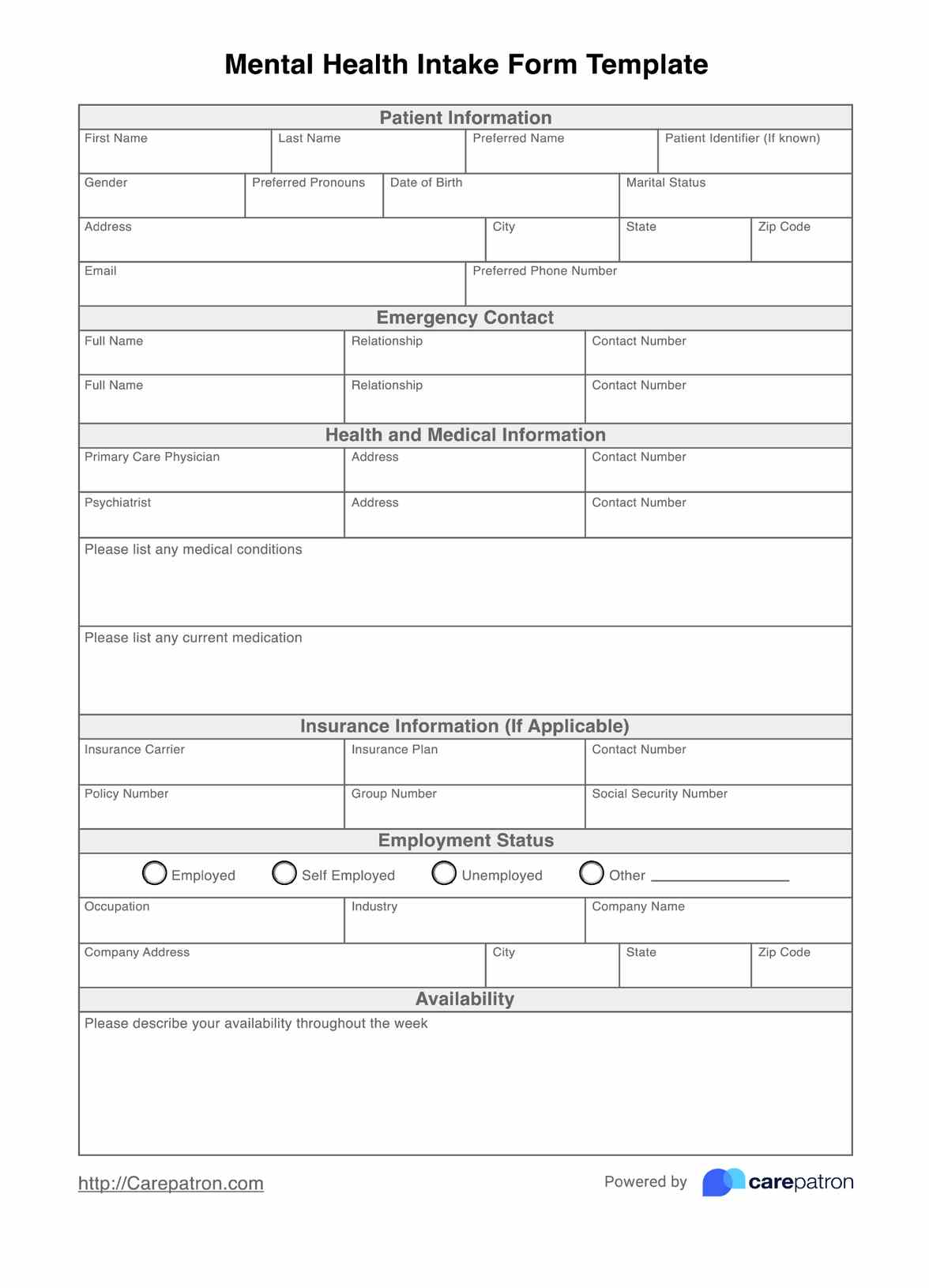Substance Abuse Assessment
Learn about Substance Abuse Assessments and their role in personalized treatment plans. Download a free example PDF to understand their significance.


What is a Substance Abuse Assessment?
Substance abuse involves the harmful use of psychoactive substances like alcohol and illicit drugs, leading to adverse health consequences and significant financial burdens on individuals, families, and society.
Treatment programs for substance use disorder typically include various therapeutic options like individual, group, or family therapy sessions. The primary goals are to comprehend the essence of addiction, achieve sobriety, and prevent relapse. These programs offer different levels of care and settings tailored to individual needs, which may range from outpatient to residential and inpatient programs.
are crucial in guiding the appropriate treatment approach for each person. By assessing an individual's specific needs and circumstances, treatment providers can design personalized plans that address their unique challenges and increase the likelihood of successful recovery.
These assessments also help monitor progress during the treatment journey and adjust the program if necessary, fostering a more effective and supportive healing process.
Individuals struggling with substance use disorder often suffer from depression, anxiety, or trauma. By recognizing these underlying issues, treatment programs can integrate diagnosis approaches, simultaneously addressing addiction and mental health concerns.
If you're looking for a useful treatment plan, feel free to watch the video below:
Substance Abuse Assessment Template
Substance Abuse Assessment Example
How does it work?
Step 1: Introducing the Purpose and Instructions
At the outset of the Printable Substance Abuse Assessment, introduce the assessment's purpose and provide clear instructions to the participants. Explain that the evaluation aims to understand their substance use patterns and assess the potential presence of substance use disorder.
Step 2: Completing the Assessment with Honesty
Encourage participants to respond truthfully and candidly to each question. Inquire about the frequency and types of substances used, any attempts to control or stop substance use, and the consequences experienced due to substance misuse.
Step 3: Scoring and Analyzing to Obtain Results
After participants complete the assessment, analyze and score their responses. Assign numerical values based on established criteria for substance use disorder. By tallying the scores, determine the severity of the substance issue, ranging from mild to moderate or severe substance use disorder.
Step 4: Giving Personalized Feedback and Interpretation
Provide each participant with personalized feedback and a comprehensive interpretation of their assessment results. Explain the significance of their scores, shedding light on their substance use patterns and potential impact on their overall well-being.
Step 5: Providing Treatment Planning and Follow-ups
Based on the assessment outcomes and individual circumstances, collaborate on developing a personalized treatment plan. Include counseling, therapy, support group participation, or other interventions tailored to their needs and goals. Emphasize the importance of continuous progress monitoring and follow-up to support their journey toward sustained recovery.
When would you use this Template?
The Substance Abuse Assessment template helps address various substance misuse and addiction aspects. Its applicability spans different contexts, making it a crucial resource in effectively identifying and addressing substance use disorders.
Its primary purpose is to evaluate individuals' substance use patterns and potential substance use disorders. The assessment is helpful in screening and identifying early signs of substance misuse, making it an essential resource for mental health professionals, counselors, and addiction specialists.
In treatment planning and progress tracking, the Substance Abuse Assessment assists in developing personalized treatment plans tailored to an individual's specific needs. It also enables ongoing monitoring of their response to treatment, ensuring that interventions are effective and adjusted as required. Substance abuse rehabilitation centers and recovery programs often utilize the assessment during intake to comprehensively understand the individual's substance use history and patterns.
The assessment's value extends to family support and intervention efforts, as family members and friends can use the information to engage in a more informed and supportive manner.
Benefits
Utilizing our Free Substance Abuse Assessment offers significant advantages supported by Research and Addiction Treatment Practices:
Provides Early Detection and Intervention
The Substance Abuse Assessment facilitates the early detection of substance use issues, enabling timely intervention and support. Identifying signs of substance misuse at an early stage increases the likelihood of successful recovery and reduces the risk of severe consequences.
Offers Personalized Treatment Planning
Based on the assessment results, personalized treatment plans can be developed to address an individual's specific substance use patterns and needs. Tailoring treatment interventions enhances the effectiveness of the recovery journey, ensuring that each person receives the most appropriate and targeted support.
Enables Progress Monitoring and Adjustment
The assessment serves as a valuable baseline for monitoring an individual's recovery progress. Regular reassessments allow for adjustments to the treatment plan, ensuring it remains aligned with the person's evolving needs and challenges, maximizing the chances of successful outcomes.
Provides Enhanced Self-Awareness and Insight
Completing the Substance Abuse Assessment promotes greater self-awareness regarding substance use habits and their impact on one's life. This heightened insight can motivate individuals to seek help and make positive changes, fostering a deeper commitment to the recovery journey.
Research & Evidence
Alcoholism was officially recognized as a mental disorder by the American Psychiatric Association (APA) in 1935. In subsequent decades, significant studies on the genetics, physiology, and psychology of alcoholism were conducted during the 1950s and 1960s.
The establishment of the National Institute on Alcohol Abuse and Alcoholism (NIAAA) in the 1970s further fueled research efforts, funding various alcoholism-related studies.
Presently, research on alcoholism remains an active and ongoing endeavor. Researchers continue to delve into the underlying causes of alcoholism, striving to gain a deeper understanding of the complexities involved.
Prevention also holds a prominent place in research efforts, with a focus on strategies to mitigate alcohol misuse and its adverse effects on individuals and society as a whole.
Tools like the Substance Abuse Assessment help in the early detection of alcohol misuse and substance use disorders. By identifying signs of alcoholism early, individuals can receive timely intervention and support, increasing the chances of successful recovery and minimizing the potential for severe consequences.
References
Mee-Lee, D., Shulman, G. D., Fishman, M. J., Gastfriend, D. R., Griffith, J. H., & Miller, M. M. (Eds.). (2013). The ASAM criteria: Treatment criteria for addictive, substance-related, and co-occurring conditions. American Society of Addiction Medicine.
Babor, T. F., Higgins-Biddle, J. C., Saunders, J. B., & Monteiro, M. G. (2001). The Alcohol Use Disorders Identification Test: Guidelines for use in primary care. World Health Organization.
Commonly asked questions
The Substance Abuse Assessment benefits primary care providers, mental health professionals, substance abuse treatment providers, and researchers. It aids in identifying at-risk patients, developing treatment plans, and collecting data on substance abuse prevalence and effectiveness.
Utilized in primary care, mental health, substance abuse treatment, and research settings, the Substance Abuse Assessment is used to assess patients' needs, monitor progress, and collect data on treatment effectiveness.
Participants are guided through five steps: introduction of purpose and instructions, honest completion of the assessment, scoring, and analysis of responses, personalized feedback and interpretation, and developing a treatment plan with follow-up for sustained recovery.


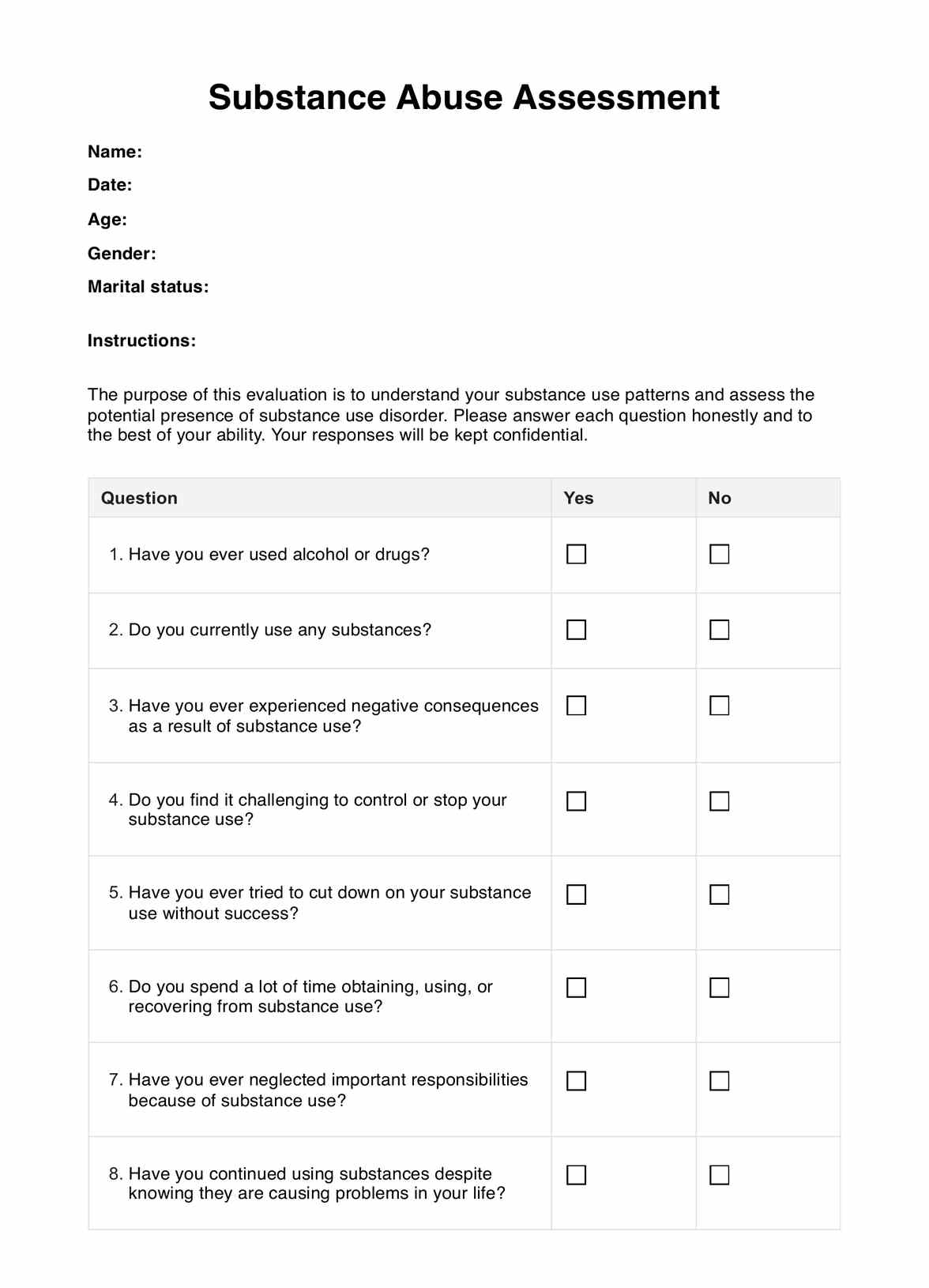
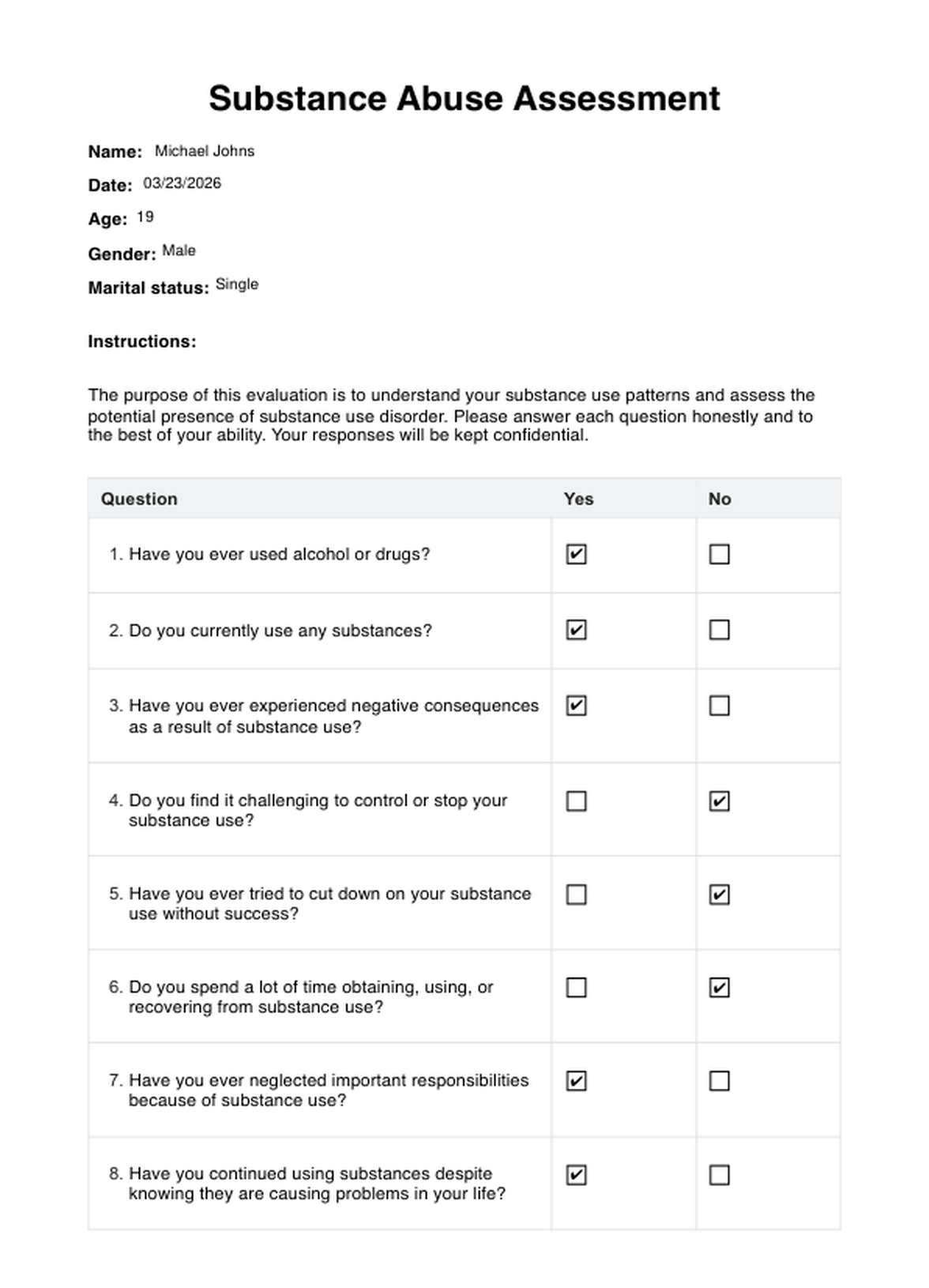

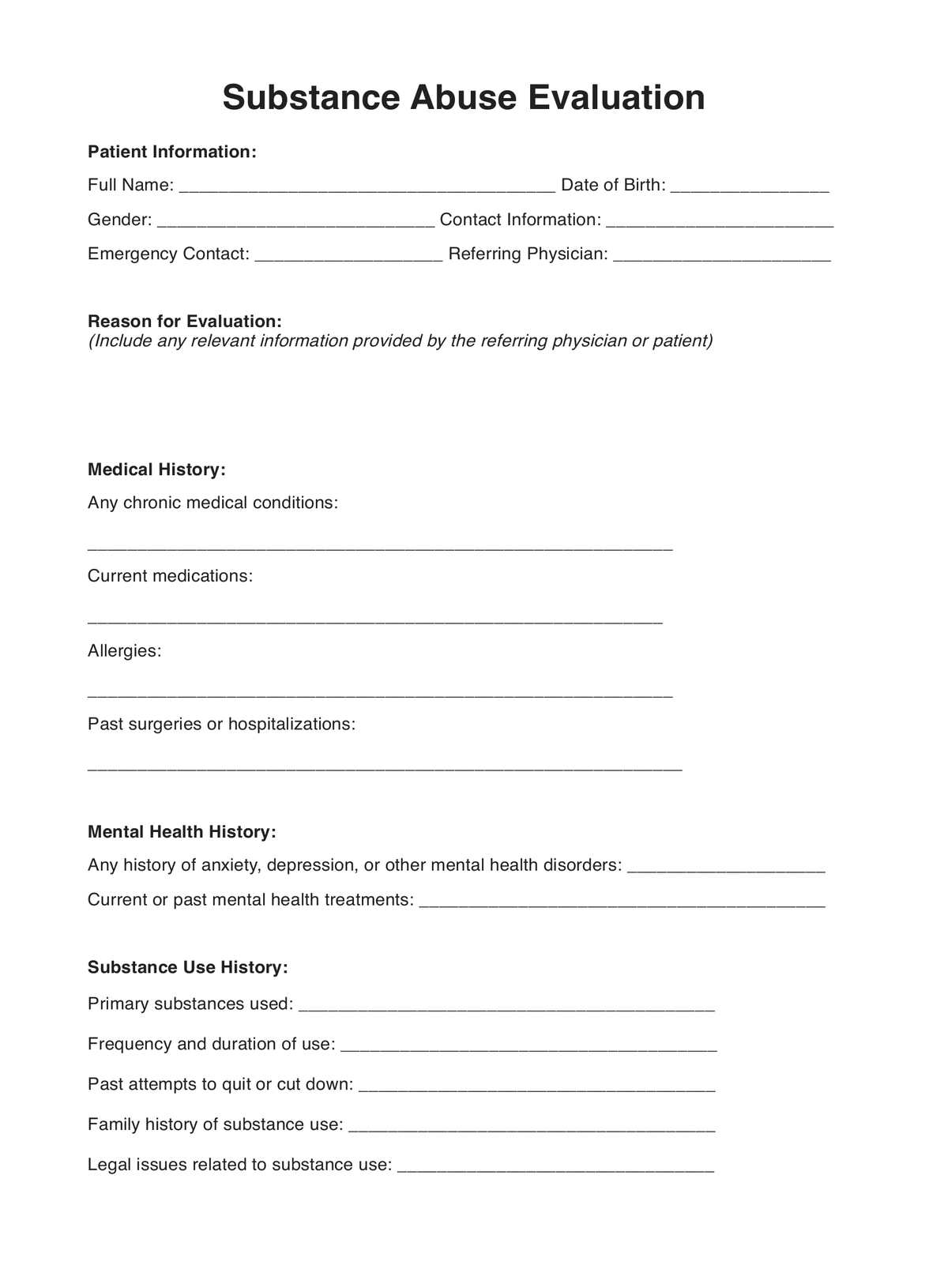
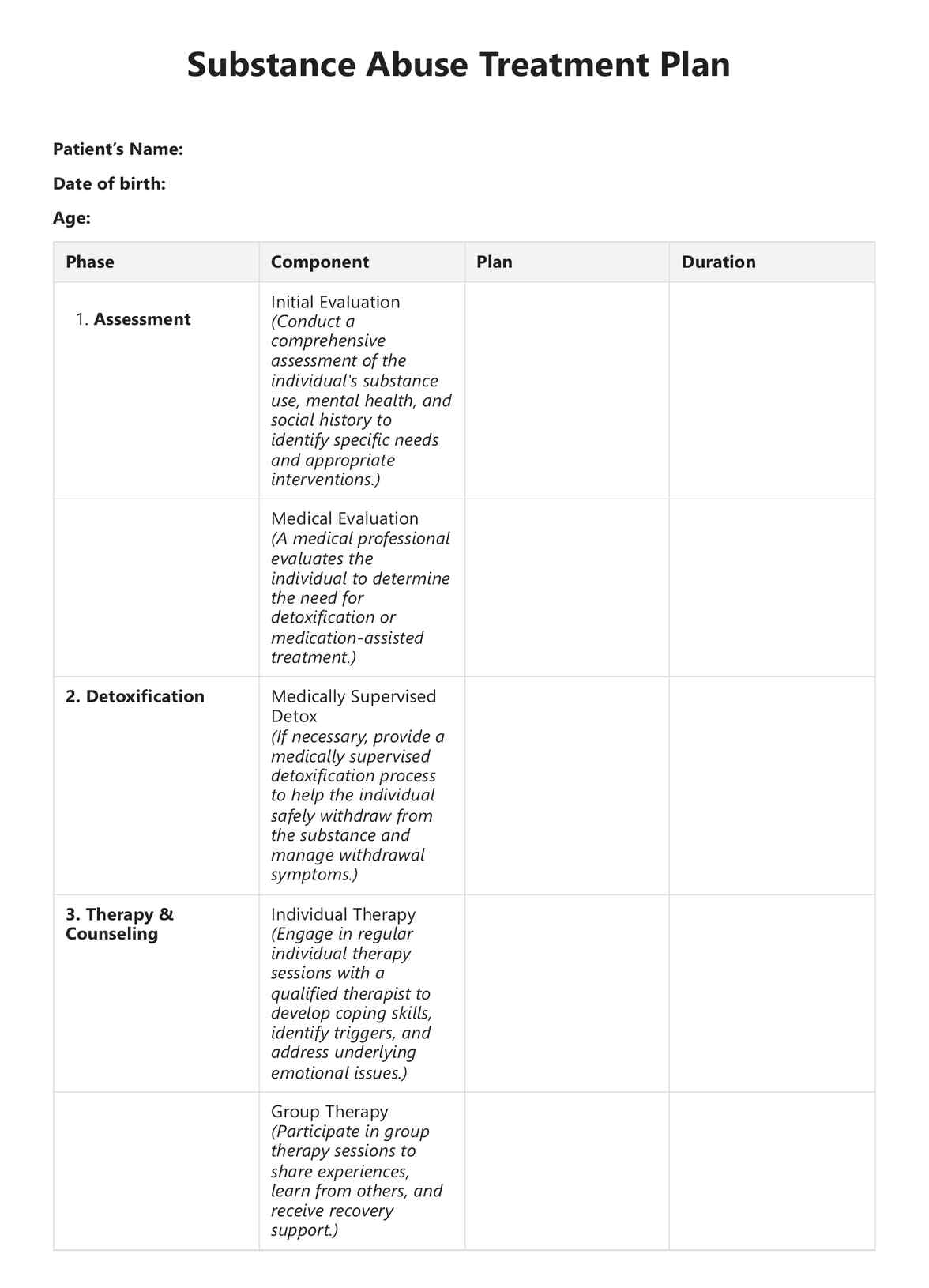
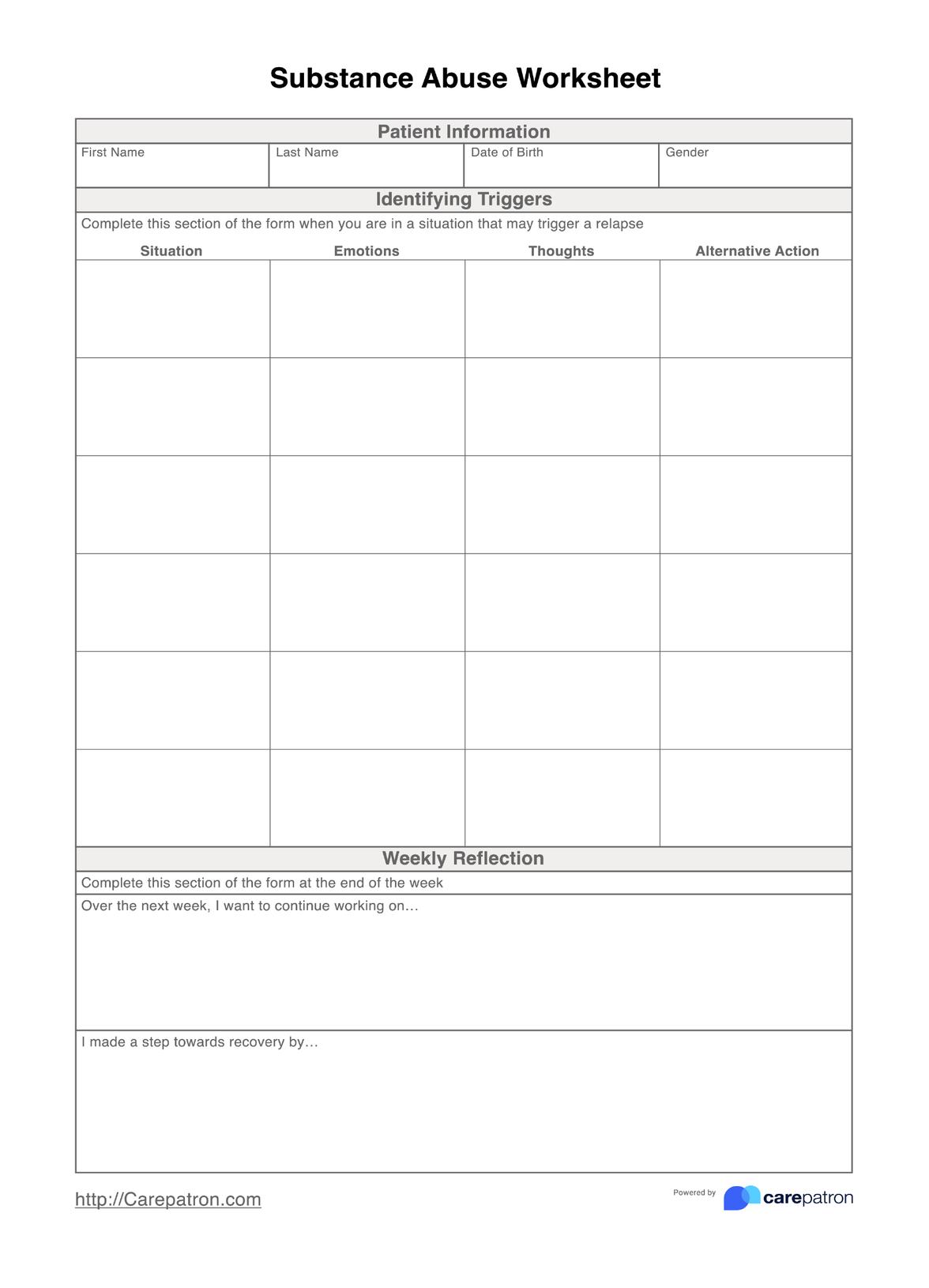

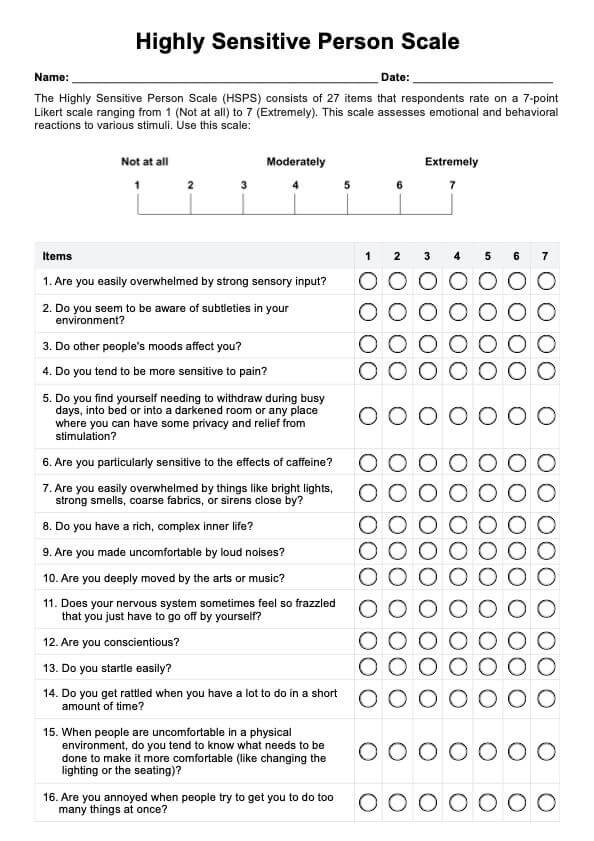










-template.jpg)


